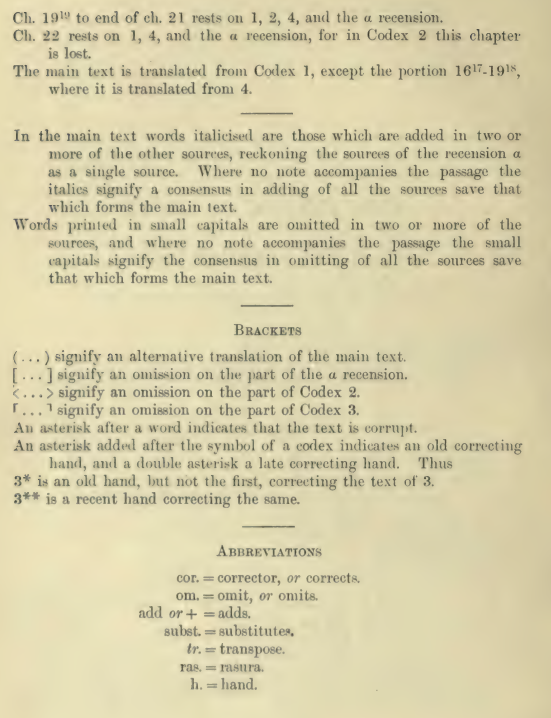The Armenian alphabet was apparently invented in AD 405 by Mesrop Mashtots and Isaac of Armenia for the purpose of having a written language into which to translate Scripture. The translation was apparently initially made from Syriac and then subsequently retranslated Greek. (The Heritage of Armenian Literature) (further thoughts on the Armenian version here)
In 1907, the Text and Translation Society published Frederick Cornwallis Conybeare's critical edition of the Armenian translated into English. Below, I've transcribed the text he offers (as well as his marginal readings), followed by images of the transcribed text and images of the explanation of the apparatus.
For us, Conybeare's work is useful, even despite
5 And I heard from the angel of the waters that he said, Righteous is he which exists and holy. For thus he hath judged.
5 of the waters] 2 4——that he] who a——Righteous art thou, the existent, thy existent, thou holy, for this hast thou judged 4——exists and which is, holy 2: exists and is and holy 3 (holy over a rasura of alone): exists and is and holy in his works a.
5 Եւ լուայ ի հրեշտակէն զի ասէր, արդար է որ էնն և սբ. զի այն. պէս դատեցաւ։
Proposed
- Եւ (yev) – "And"
- լուայ (luay) – "I heard"
- ի հրեշտակէն (i hreshdaken) – "from the angel"
- զի (zi) – "that" (introducing indirect speech)
- ասէր (aser) – "he said" (imperfect)
- արդար է (ardar e) – "righteous is"
- որ (vor) – "who"
- էնն (enn) – "is" (a form of "to be")
- և (yev) – "and"
- սբ. (sb.) – "holy" (abbreviation for "սուրբ")
- զի (zi) – "because"
- այն. (ayn.) – "thus" (possibly an abbreviation for "այնպէս")
- պէս դատեցաւ (pes datets’av) – "thus was judged" (passive form of "judge")






No comments:
Post a Comment